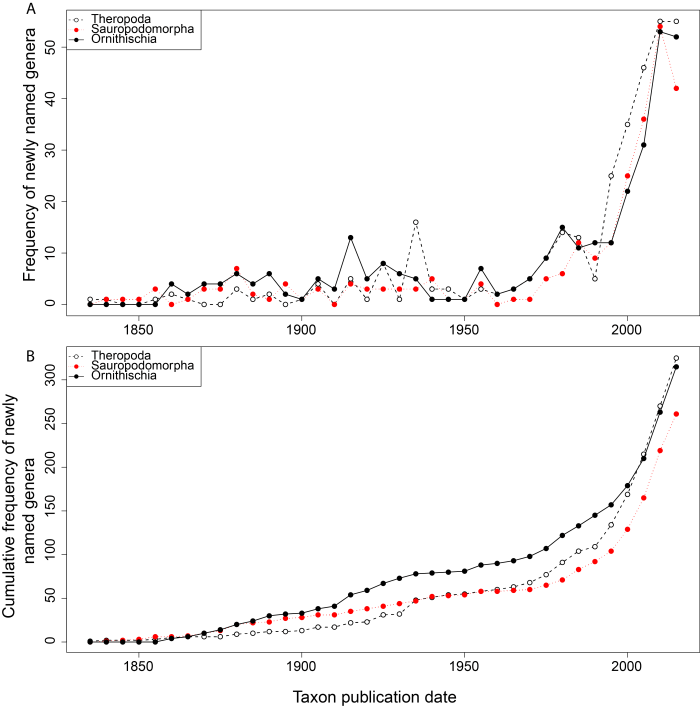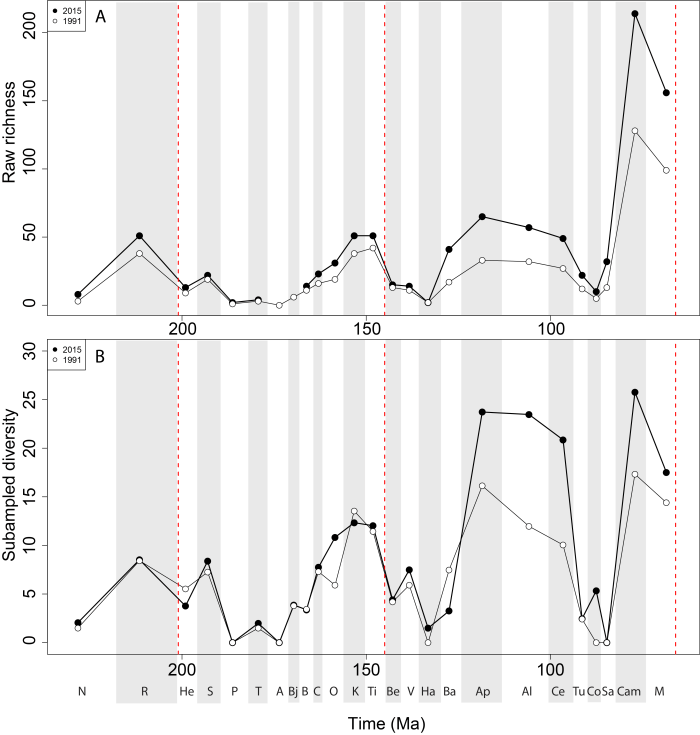What if most things we currently know about dinosaurs are going to change?
Everything we know about dinosaurs comes from their fossil record, and how we as humans document and interpret that. As such, our understanding of their evolution is based on what is known at any given point in time, and subject to change as new discoveries are made. As any science should be!
Alessandro Chiarenza, Matt Baron, and myself have a new paper out trying to figure out how to measure this and the impact that it can have. We focused especially on how new discoveries influence our understanding of diversity levels through geological time. We hope you have the time to read it, and find it enjoyable and give any feedback (positive or negative!) that you might have.

It’s a nice little paper that shows that in the last 20 years, the number of dinosaur genera named, as well as the number of specimens of those genera, has increased greatly. This has profound impacts on our understanding of dinosaur diversity, especially as these discoveries are unevenly spread over time and space. There are still huge gaps in our knowledge of the fossil record, and areas in space and geological time where the rapid pace of discovery is changing much of what we thought we knew about dinosaurs.
Abstract
Assessments of dinosaur macroevolution at any given time can be biased by the historical publication record. Recent studies have analysed patterns in dinosaur diversity that are based on secular variations in the numbers of published taxa. Many of these have employed a range of approaches that account for changes in the shape of the taxonomic abundance curve, which are largely dependent on databases compiled from the primary published literature. However, how these ‘corrected’ diversity patterns are influenced by the history of publication remains largely unknown. Here, we investigate the influence of publication history between 1991 and 2015 on our understanding of dinosaur evolution using raw diversity estimates and shareholder quorum subsampling for the three major subgroups: Ornithischia, Sauropodomorpha, and Theropoda. We find that, while sampling generally improves through time, there remain periods and regions in dinosaur evolutionary history where diversity estimates are highly volatile (e.g. the latest Jurassic of Europe, the mid-Cretaceous of North America, and the Late Cretaceous of South America). Our results show that historical changes in database compilation can often substantially influence our interpretations of dinosaur diversity. ‘Global’ estimates of diversity based on the fossil record are often also based on incomplete, and distinct regional signals, each subject to their own sampling history. Changes in the record of taxon abundance distribution, either through discovery of new taxa or addition of existing taxa to improve sampling evenness, are important in improving the reliability of our interpretations of dinosaur diversity. Furthermore, the number of occurrences and newly identified dinosaurs is still rapidly increasing through time, suggesting that it is entirely possible for much of what we know about dinosaurs at the present to change within the next 20 years.

Reference
(2018) How has our knowledge of dinosaur diversity through geologic time changed through research history? PeerJ 6:e4417 https://doi.org/10.7717/peerj.4417 (https://peerj.com/articles/4417/?td=bl) – The full peer review history is also available here.
Footnote: Richard Butler and colleagues also have a new paper out today that looks at similar things in much more detail! See thread on Twitter here for more details.
Thanks for the heads up, your email alerts have saved me loads of money.